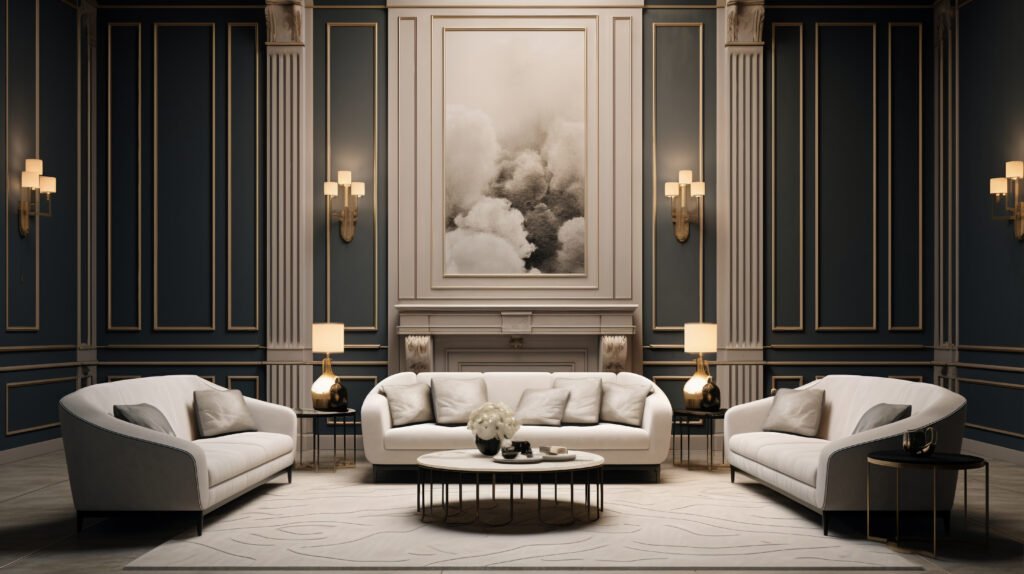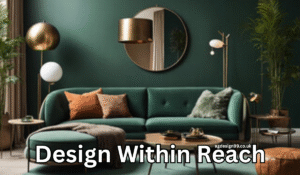Learn everything about interior design styles, tips, layouts, color theory, and how to transform any room into a functional and beautiful space.
What Is Interior Design?
Interior design is the art and science of enhancing the interior of a space to achieve a more aesthetically pleasing and functional environment. It blends creativity, architecture, psychology, and practical know-how to create spaces that reflect personality and serve a purpose.
Interior design is the process of planning and decorating interior spaces to be functional, beautiful, and reflective of the people who use them. It involves furniture layout, color palettes, lighting, materials, and decorative elements.
In this comprehensive guide, we’ll dive deep into what interior design really is, explore popular styles, walk through the design process, offer practical tips, and answer common questions. Whether you’re starting from scratch or refreshing a single room, this article is your go-to resource for all things interior design.
The Foundations of Interior Design
Interior design combines both form and function. It takes into account how a space looks and how it works. A well-designed interior is more than just eye candy—it improves your quality of life.
Core Principles:
- Balance: Distributing visual weight evenly through symmetry or asymmetry.
- Harmony: Creating a unified look using consistent styles and tones.
- Rhythm: Guiding the eye through repetition, progression, or contrast.
- Emphasis: Highlighting a focal point like a fireplace, artwork, or statement furniture.
- Proportion and Scale: Making sure objects relate well in size and shape to each other and the room.
Popular Interior Design Styles
Understanding design styles helps you identify what resonates with your taste. Here are some of the most influential and timeless styles:
Modern
Clean lines, neutral tones, open spaces, and a focus on function.
Minimalist
Less is more. A pared-down aesthetic with only the essentials.
Scandinavian
Bright, airy, and simple with lots of natural light and wood.
Bohemian
Eclectic, colorful, layered, and globally inspired.
Industrial
Raw finishes, exposed elements, and a utilitarian vibe.
Traditional
Ornate details, symmetry, and timeless furniture pieces.
Japandi
A blend of Japanese elegance and Scandinavian simplicity.
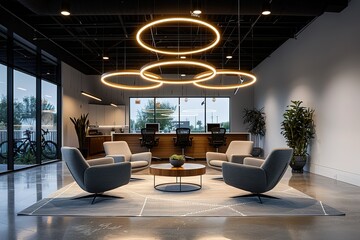
The Interior Design Process
Here’s how most professionals approach a project:
- Initial Consultation: Understanding goals, needs, and budget.
- Concept Development: Style boards, color palettes, and rough layouts.
- Space Planning: Mapping the room with accurate measurements.
- Design Development: Selecting finishes, materials, furniture, and decor.
- Execution: Implementing the plan—ordering, coordinating, and installing.
- Final Reveal: The exciting moment when everything comes together.
Space Planning and Layouts
Bad layouts can ruin even the most beautiful design. Here’s how to get it right:
- Measure everything (twice)
- Consider traffic flow
- Anchor spaces with rugs or lighting
- Float furniture off the walls in larger rooms
Use software like SketchUp or graph paper for DIY planning.
Color Theory in Interior Design
Color affects mood, perception, and functionality.
- Neutrals: Great base for layering. Think white, beige, gray.
- Warm Colors: Reds, oranges, and yellows create coziness.
- Cool Colors: Blues and greens evoke calm.
Tips:
- Stick to a 60-30-10 rule: 60% dominant color, 30% secondary, 10% accent.
- Use color to define zones in open layouts.
Lighting Design: Creating Ambiance and Function
Lighting transforms how we perceive space.
- Ambient Lighting: Main source of light (ceiling fixtures).
- Task Lighting: Focused light for work (desk lamps, under-cabinet).
- Accent Lighting: Adds drama or highlights features (sconces, LED strips).
Layer your lighting and add dimmers for flexibility.
Texture, Materials, and Finishes
Texture makes a room feel complete. Mix different materials to add visual interest:
- Wood (rustic or polished)
- Metals (brushed brass, matte black)
- Fabrics (linen, velvet, wool)
- Stone (marble, granite)
Combining textures balances softness with structure.
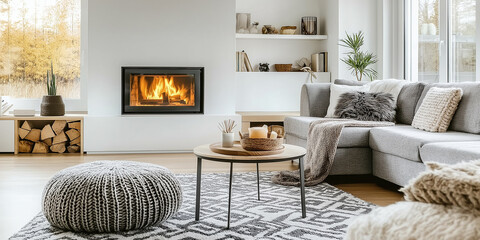
Furniture Selection and Arrangement
Start with the largest pieces (sofa, bed, dining table) and build around them.
- Choose quality over quantity.
- Scale furniture to the room size.
- Avoid pushing everything against the wall.
Invest in multi-functional pieces for small spaces.
Decor, Accessories, and Styling Tips
The final layer adds personality.
- Use throw pillows, books, vases, and art.
- Mix old with new for authenticity.
- Group objects in odd numbers.
- Don’t overcrowd—give items room to breathe.
Pro tip: Style shelves in layers—books, vertical items, personal accents.
Interior Design Tips for Every Room
Living Room
- Anchor with a rug
- Use a mix of seating
- Hang art at eye level
Kitchen
- Use task lighting
- Keep counters clutter-free
- Add bar stools or a breakfast nook
Bedroom
- Invest in good bedding
- Create symmetry with nightstands
- Use blackout curtains for better sleep
Bathroom
- Add a statement mirror
- Use wall hooks to save space
- Upgrade lighting for a spa feel
Home Office
- Prioritize natural light
- Choose ergonomic furniture
- Keep decor inspiring but minimal
Budgeting and Hiring a Designer
Interior design can be done at any budget level.
Tips:
- Set priorities before spending.
- Allocate 10-15% for unexpected costs.
- Mix high and low pieces.
Hiring a designer? Ask for portfolios, references, and clear pricing structures. Sites like ASID can help you find certified professionals.
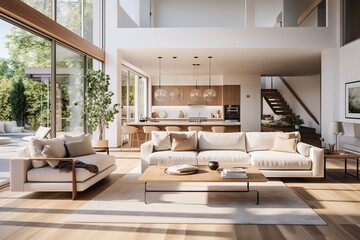
Final Thoughts
Interior design is more than picking out furniture—it’s about crafting an environment that supports the way you live. The right design can energize you, calm you, and reflect who you are.
Now that you have a comprehensive understanding, start by defining your style, setting a budget, and tackling one room at a time. Or, bring in a pro to take your vision further.
Ready to design a space you love? Start now—your dream room is waiting.
FAQs
What is the difference between interior design and interior decorating?
Design includes space planning and functionality; decorating focuses on aesthetics and furnishing.
How do I define my style?
Look at what you’re drawn to on Pinterest or in magazines. Patterns will emerge.
Can I design my space without a professional?
Absolutely. With research, planning, and patience, DIY is very possible.
How long does an interior design project take?
From 2 weeks to several months depending on the scope.
What are common interior design mistakes?
Bad lighting, ignoring scale, clutter, and copying trends without personalization.


